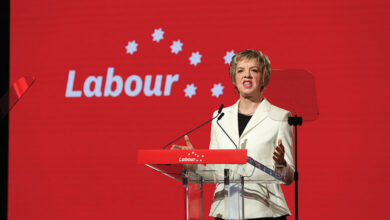Trades Union desk


A just transition to a low carbon economy is the only sustainable response to the threat posed to communities and workers by climate change. ICTU’s Macdara Doyle writes.
In July 2012, several hundred Spanish coal miners arrived in Madrid, having completed a march of up to 500 kilometres from the northern regions of Asturias, Aragon and Castilla y León, home to many of the country’s historic mining communities.
Their epic trek became known as La Marcha Negra (the Black March) and was cheered on by thousands of well-wishers and supporters along the route and upon their arrival in the capital.
Superficially, their protest centred on plans by Prime Minister’s Rajoy right-wing government to slash subsidies that were vital to the survival of the coal industry, the miners’ continued employment and the very existence of their communities.
However, theirs was not a luddite-style movement that blithely ignored reality and the longer-term global requirement to shift economies away from dependence on carbon and fossil fuels.
In fact, there was a five-year plan negotiated between mining unions and the Spanish government which allowed for the subsidies to be reduced over that timeframe – it was the breaking of that deal and the imminent threat to their jobs, families and communities that prompted the miners to set out on La Marcha Negra.
Their protest was a microcosm of the challenges and threats that now face countless thousands of workers and communities across the developed world, including Ireland. And their demand was one which trade unions have long championed as the only sustainable response to climate change – the need for a just transition to a low carbon economy.
The concept of a just transition has its origins in the international labour movement, as it recognised – many years before most – the huge implications of climate change for members and their communities, particularly those based around more traditional, fossil-based industries.
Recognition of this inevitability was pithily summarised by the International Trade Union Confederation (ITUC) campaign slogan – ‘No Jobs on a Dead Planet.’
Just transition was devised as the most suitable and sustainable strategy to deal with the challenge. Put simply, it seeks to ensure that those who work in the sectors affected and the wider communities are not left high and dry, shouldering the burden of transition alone.
Earlier this year, Australian resource and mining unions published a study on the stark choices presented by the imminent closure of its coal-fired power generation stations.
The study was entitled ‘The Ruhr or Appalachia?’ and contrasted the fate of the two regions that are often associated with traditional, carbon-based industry and power generation. In the case of the Ruhr, advance planning, consultation and dialogue between the authorities, unions and employers saw the region successfully transition to a lower carbon economy.
By contrast, the social and economic devastation that has overtaken Appalachia in recent years was not solely caused by the closure of its many mines, but the failure to address this transition in any sustainable manner has exacerbated a wider crisis in the region.
Hardly surprising that Appalachia now exhibits one of the highest rates of opiod addiction in the United States, with one US study noting the link between high levels of opiod prescriptions (from 2006-2016) and “substantially lower prime-age labour force participation rates”.
In October 2018, after many years of campaigning (and a change of government) Spanish mining unions and the authorities announced a just transition deal for the communities of Asturias, Aragon and elsewhere, which will see up to €250 million invested in the affected areas and in developing supports for the workers.
These are global challenges from which Ireland will not be exempted. Congress has called for the establishment of a just transition forum here, as a matter of urgency, in order to help us fashion a response that ensures no community or worker is left behind.
We at least enjoy the advantage of being able to study and learn from the example of others, conscious of the fact that clear and coherent just transition strategy will enable us to take advantage of the many opportunities that will inevitably arise.
Germany’s Ruhr is now home to two of the world’s largest manufacturers of wind turbine machinery, creating jobs and growth in the process. In a previous life, both companies produced coal mining equipment.





